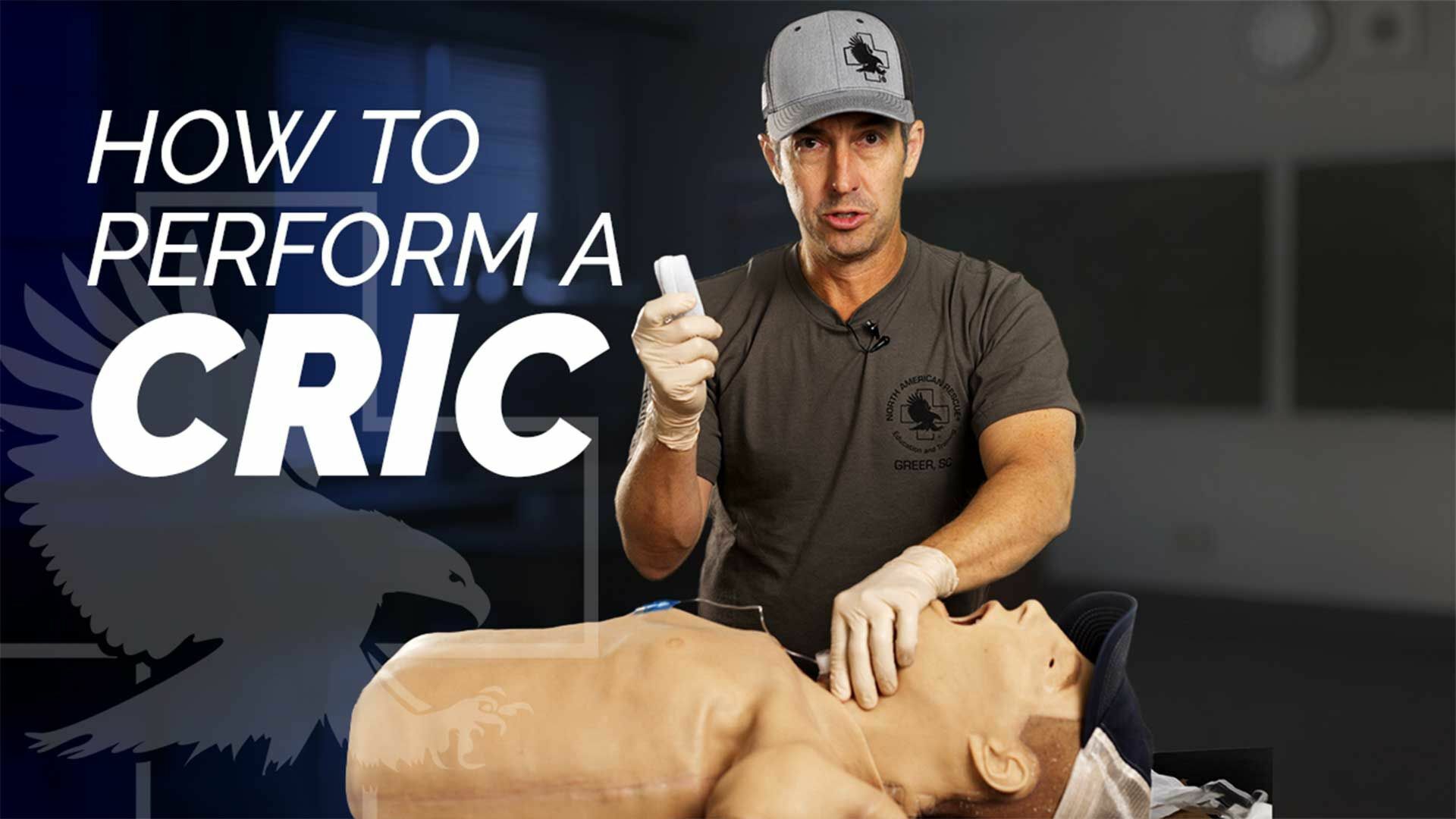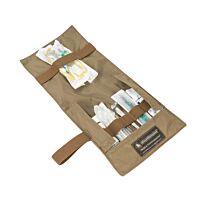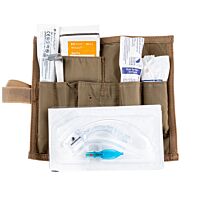So what is a cricothyroidotomy, when would you do it and how would you do it? That's what we're going to go over today. You can see a cricothyroidotomy has been performed on this patient. It's in place and secure. So what I've done here is I've made a way for air to travel into this tube, bypass the mouth.
Upper throat, posterior pharynx, any trauma, any blood, any issues that are going on here, I've bypassed all that and I've made an opening to the outside. So now I can breathe for my patient or my patient can breathe on his own through this tube. So in general there are four different ways that we can help get air moving in and out and help that patient's airway.
From least invasive to most invasive. Number one is we can put an NPA in, which is a nasopharyngeal airway. This is the one from North American Rescue. It comes in a pre-lubed pack. We're going to put that in either nostril. What that's going to do is go down and keep that soft palate up, so the patient can keep breathing on their own.
Number two is something called a supraglottic airway. There are a lot of different types of supraglottic airway, but the idea is that we take a tube, We place it down into your mouth, into the back of your throat. It occludes your esophagus but allows air to come in and out of your trachea.
Number three is inhibition. That's where we take an endotracheal tube and we place it through the patient's mouth, into their trachea. Inflate a balloon to keep it secure, and then we're able to breathe for that patient or allow that patient to breathe through the endotracheal tube.
Number four, and the most invasive, is if there's a problem with the upper airway. So maybe there's trauma, maybe there's a lot of blood. Maybe there's severe burns, or maybe it's just a very difficult airway and we're not able to get it through one of the other three methods. Then what we'll do is we'll cut a hole in the patient's neck, we'll go through their cricothyroid membrane, and we'll place a small, dedicated tube that goes into the trachea and allows for air to circulate from the lungs to the outside and back and forth.
How do you do a cricothyroidotomy? Hey everyone, Doc Miles at North American Rescue. The first thing you're going to do is you're going to take your ballpoint pen, you're going to remove the contents, and then you're going to make a sharp stabbing motion in the patient's throat.
Just kidding, never do that.
What we are going to do is we're going to use a dedicated cricothyroidotomy kit called the backpack and this is a bougie-aided cricothyroidotomy pack from North American Rescue. All right, the first thing I'm going to do in this procedure is I'm going to open up my contents of my kit and get it laid out and tested in the right order that I want.
So I've already hooked up my syringe to the balloon. I test that balloon just to make sure it looks good. We're holding air, then I'm going to pull the air back out of it. I've got all my contents laid out. The next thing I'm going to do is I'm going to find my key landmarks. So, I'm going to find the cricothyroid membrane, which you can see in this illustration above me.
The cricothyroid membrane is a small, thin membrane that really feels like a little soft spot right between your cricoid cartilage and your thyroid cartilage. So I've found that. I'm going to use my non-dominant hand to hold that. I will use my swab stick to clean the area, and I'm going to take my scalpel. I've identified my landmark. I'm going to do one solid motion. Center line down. As I see it start to open, I'm gonna make a sideways motion. After I've made my horizontal incision, I'm gonna dispose of my blade. I'm gonna take my Cric hook. Some people like to pull up towards the top of the head, some like to pull down into the trachea and I'm going to pull upward pressure. Next thing I'll do is I'll take the bougie end of my cricothyroid kit. I'll place that bougie inside of the trachea, and remove my cricook since I'm inside now.
I feel I have free motion going in and out of the trachea. I don't see any tenting of skin on either side of the neck indicating that I'm not in the trachea and I'm going out through skin. Once I'm sure that my bougie is in place, I'm going to glide the cricothyroid tube over until it's seated. I'm then going to remove my bougie from now.
At this point, I'm going to blow this up with about 8 to 10 mls of air. Check my balloon. Make sure I'm inflated. Feels good. At this point, I would grab a BVM, and I would give my casualty a breath or two if they're not breathing on their own, or see if I see spontaneous rise and fall of the chest, indicating that they're breathing through their trach just fine.
I'm also going to want to confirm that, if I have an end tidal CO2 detector like an EMA. I'm going to want to put that on and make sure I'm in the right spot. Listen to lung sounds and of course, reevaluate my casually as I go. Finally, what I'm going to do is I'm going to take my tracheal tube holder and I'm going to secure that into place.
All right, my cricothyroidotomy is in place. I've got it secured. My bulb is inflated and my casually is either breathing through that tube or I'm breathing for my casually. Again, monitoring and rechecking at all times. Remember there are multiple ways to do a cricothyroidotomy. So follow your medical director's instruction and your local protocols.




